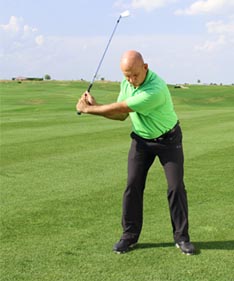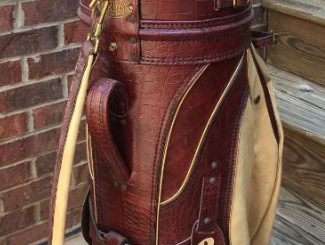
Archimedes once said “Give me a lever and a place to stand and I can move the world.”
Power Comes From Leverage
You don’t need to be muscle-bound to hit longer drives. But you do need to take advantage of all the power you have available to you. You maximize the power in your golf swing through leverage.
Distance Comes from Speed
Hitting your drives farther is not so much about power as it is about speed. You want to have your clubhead traveling as fast as possible through impact.
Leverage Provides the Power to Generate Speed
The power in your golf swing should be used to rotate your core through impact to the target in an efficient pivot. Faster core rotation will generate the clubhead speed you want.
The common mistake most golfers make when trying to drive the golf ball farther is to throw the clubhead at the ball with their hands and arms. The challenge is that the hands and arms are not nearly as strong as the big muscles in the core – from the hips to the shoulders. The strength in your hands and arms is used to control the club face, not to generate clubhead speed.
The Key is Good Foot Work
Jack Nicklaus believes that a good golf swing begins with good foot work. Creating more leverage in your swing – and consequently effortless power – starts with your feet.
Your Leverage Point is the Ball of Your Right Foot.
At the top of the swing you should be loading power and energy on the inside part of the right foot, right on the ball of the foot. The inside part of the ball of the right foot is your action position. If you don’t have your weight set on the inside part of the ball of your foot at the top of your swing, you are robbing yourself of power and distance.
Leverage Examples
Picture a basketball player on defense. In order to stay in front of the dribbler the defensive player has to shuffle their feet from side to side as the ball moves. They push from the inside part of their feet – the ball of the foot – to move sideways.
That same pushing motion, when combined with a pivot, is what adds power to the golf swing.
Another example would be a baseball pitcher. On the mound there is a rubber slab that pitchers use for leverage to push off of and pivot towards the plate when they throw. It is not arm strength that creates ball speed. In fact, their arm needs to be relaxed in order to maintain accuracy and to make the small positional adjustments that mean the difference between fastballs and curve balls. It is leg and torso strength maximized through the leverage position on the inside part of the right foot that creates speed.
The same concept applies to distance and your golf swing.
The next time you are on the range working on adding distance to your drives, pay attention to your leverage position at the top of your backswing. If it is not on the inside part of your right foot, you are losing power.
Pigeon Toe Drill to Help Feel Leverage
To help get the feel of good leverage, try the “pigeon toe” drill.
Take your normal driver stance. Before swinging, turn your right heel out so that your right foot is “pigeon toed.” Square up your hips and keep a little flex in your right knee. Make a ¾ swing and pay attention to the tension that builds in the right leg. You will likely find that it is very easy to push towards the target with the lower body when the right foot is turned in a bit.
Maintain Your Leverage For More Distance
If you want to add more distance to your drives with effortless power, maintain your leverage position throughout your swing. Leverage allows you to make efficient use of the power in your big muscles, which in turn allows your hands and arms to remain supple enough to control the clubface and produce consistent golf shots. Your leverage point is the ball of your right foot, and that is where you should load energy at the top of your golf swing.
Proudly WWW.PONIREVO.COM
by Eric M Jones



